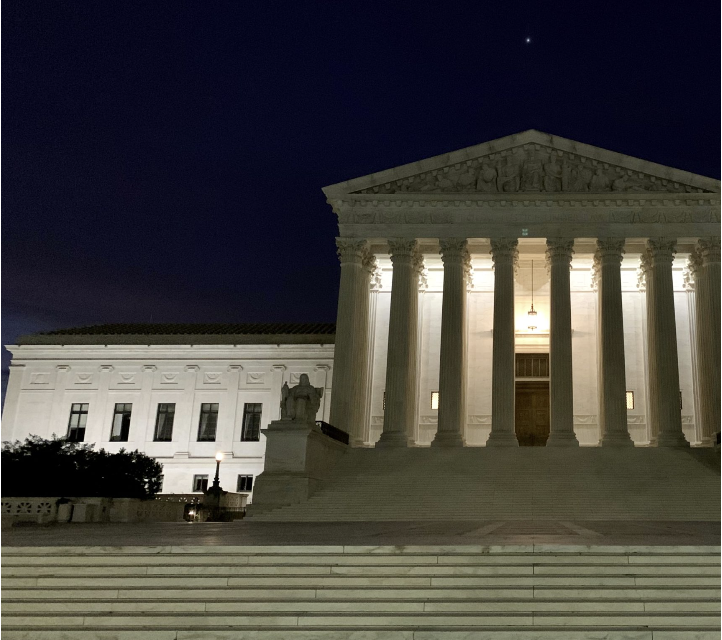Howard Lurie: Are colleges lying about affirmative action?

For over 40 years, the Supreme Court has allowed a university applicant’s race to be considered in the admissions process in order to allow for “the attainment of a diverse student body.” Recently, two cases challenging the use of affirmative action in university admissions were argued before the U.S. Supreme Court: Students for Fair Admissions v. University of North Carolina, and Students for Fair Admissions v. President and Fellows of Harvard College.
According to the brief of the United States as amicus curiae (friend of the Court) supporting the University of North Carolina, “Admissions officers are instructed that race and ethnicity may be considered ‘as one factor among many based on a holistic review of all circumstances relevant to an individual applicant’ and that ‘there are no quotas, fixed points, or separate admissions processes based on a particular candidate’s race or ethnicity.’”
“Holistic” is a fancy word for considering the whole person. It crops up a lot in the arguments of those who support the use of affirmative action in higher education. It makes what they are doing sound good. It has enabled them to persuade the Supreme Court that the race of an applicant is just one factor in admissions. As Justice O’Connor said in Grutter (Grutter v. Bollinger) universities can consider race “in the context of individualized consideration of each and every applicant.”
Of course, the reality is that they do no such thing as look at the whole person of “each and every applicant.” They lie when they say that they do.
UNC receives over 50,000 applications. Assume that looking at the file of each applicant takes only five minutes. Therefore, one admissions officer could only examine twelve applications in an hour. In an eight-hour day, that officer could consider only 96 applications. Let’s be generous and round it off to 100 applications in a day. That officer would need 500 days to review all those applications. Obviously, they need far more than one admissions officer to review all those applications in a reasonable amount of time.
Of course, having more than one admissions officer reviewing applications creates a problem. There is unlikely to be much consistency between how different admissions officers view their respective groups of applications. I know this from personal experience. I was on the admissions committee of my law school for several years. During the years that I was the chairman of this committee I attended law school admissions conferences. At one particular conference I was at the workshop for reviewing law school applications. As I recall, there were ten or twelve of us from law schools around the country. All of us were involved with admissions at our respective law schools. We were all given the same ten applications to review and rank without consultation among ourselves. At the end of the review process we compared our rankings. Even we were astounded at how little agreement there was among us.
It is time for our institutions of higher education to be honest. It is time for the Supreme Court to acknowledge that racial preferences are unconstitutional.
If admissions officers cannot agree when viewing the same application, the problem is compounded by the fact that they are, at least initially, viewing different applications. How do you narrow down 50,000 applications to a manageable size? Cutoffs for SAT scores and high school GPAs are one way, but the idea of a holistic review negates relying on those numbers except for very low numbers. And the whole idea behind affirmative action is to allow for lower numbers for so-called underrepresented minorities. This is where a consideration of race becomes a plus factor.
Of course, race is not a “plus” factor for all races. White is a race, but white applicants do not get a boost for their race. And for Asian-Americans, the group for whose benefit these lawsuits were brought, race is allegedly a “minus” factor. Apparently, only certain races and ethnicities qualify for the “plus.”
It is the use of racial preferences that gives rise to the argument that the Equal Protection clause of the Fourteenth Amendment and appropriate federal anti-discrimination legislation are being violated. Defenders of affirmative action deny that considering race as a plus factor in the holistic review of applicants amounts to racial preference. However, even Justice O’Connor in her opinion in Grutter upholding the use of race acknowledged that it was:
“We expect that 25 years from now, the use of racial preferences will no longer be necessary to further the interest approved today.”
It is time for our institutions of higher education to be honest. It is time for the Supreme Court to acknowledge that racial preferences are unconstitutional.
Read the full piece from Broad and Liberty here.
